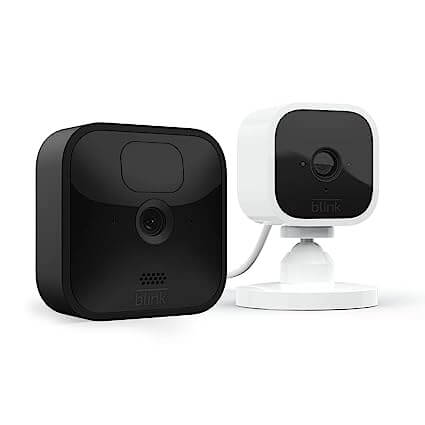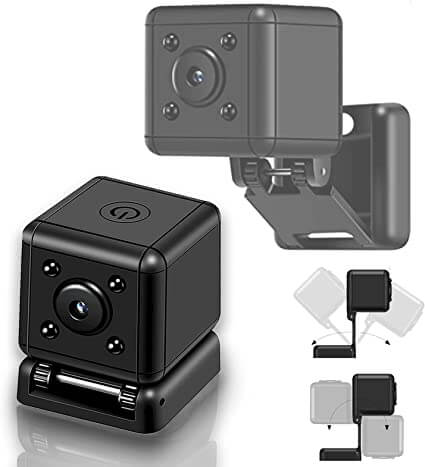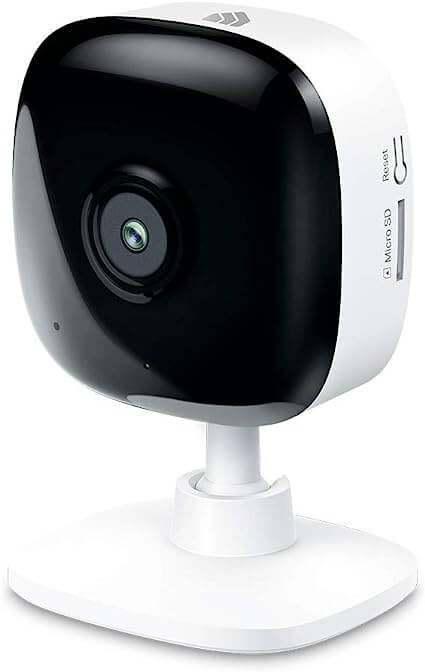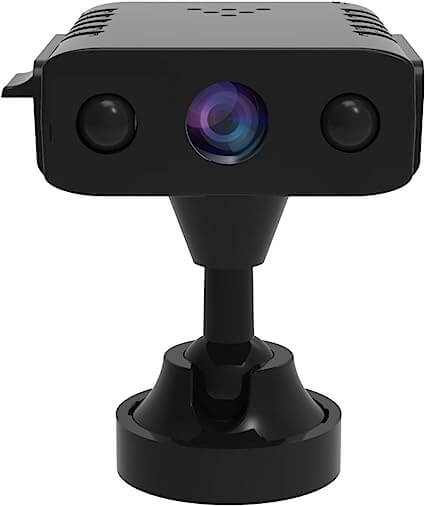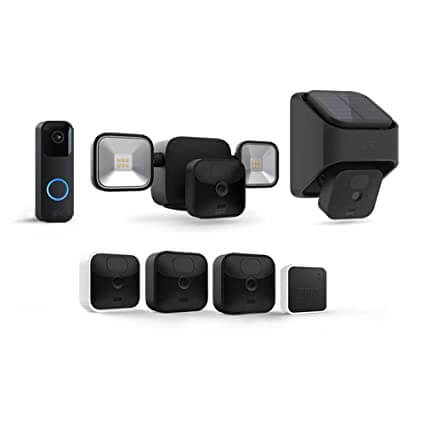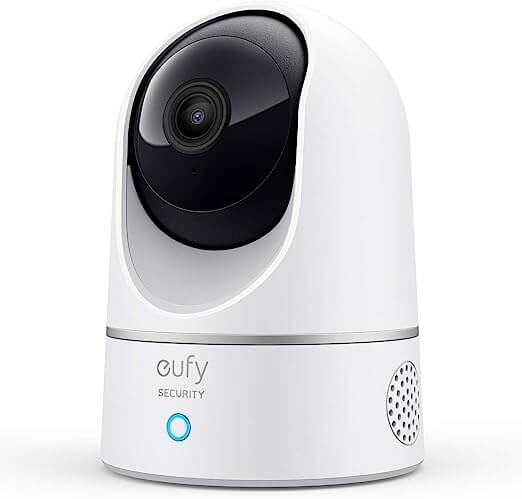Benefits of Small Cameras for Home
In today’s world, home security has become a top priority for many homeowners. With advancements in technology, small cameras have emerged as a popular choice for enhancing home security. These compact and versatile devices offer numerous benefits that provide peace of mind and convenience. In this article, we will explore the key benefits of small cameras for home security, based on personal experience and industry expertise.
Enhanced Safety and Security
Small cameras provide an additional layer of safety and security to your home. With their discreet design, they can be strategically placed to monitor entry points, valuable possessions, or vulnerable areas. Their presence alone acts as a deterrent for potential intruders, reducing the risk of break-ins and theft.
Flexible Installation Options
One of the significant advantages of small cameras is their flexibility in installation. These cameras are compact and lightweight, allowing you to place them in various locations within your home. They can be easily mounted on walls, ceilings, or shelves, providing a wide range of coverage options. Additionally, wireless small cameras offer the freedom to position them wherever needed without the hassle of running cables.
Remote Monitoring and Access
Thanks to advancements in connectivity, small cameras for home now come with features that enable remote monitoring and access. Through dedicated smartphone apps or web interfaces, you can conveniently view live footage, playback recordings, and receive real-time alerts from anywhere in the world. This allows you to keep an eye on your home even when you’re away, ensuring peace of mind and the ability to take immediate action if any suspicious activity is detected.
Easy Integration with Smart Home Systems
Small cameras are designed to seamlessly integrate with smart home systems, offering enhanced functionality and convenience. Integration with voice assistants, such as Amazon Alexa or Google Assistant, allows you to control the cameras with simple voice commands. You can also create customized automation routines that trigger specific camera actions based on different events or schedules.
Cost-Effective Solution
Compared to larger surveillance systems, small cameras offer a cost-effective solution for home security. They are typically more affordable, making them accessible to a wider range of homeowners. Additionally, the ease of installation and setup saves both time and money that would otherwise be spent on professional installation services.
High-Quality Video and Audio Recording
Modern small cameras boast high-resolution video and audio capabilities, ensuring clear and detailed recordings. This is crucial for capturing important details, such as faces or license plates, that can aid in identifying potential intruders. Some models even feature night vision technology, allowing for reliable monitoring in low-light conditions.
Peace of Mind and Convenience
Perhaps the most valuable benefit of small cameras for home is the peace of mind they bring. Knowing that your home is being monitored 24/7 provides a sense of security and allows you to focus on other aspects of your life. Moreover, the convenience of accessing camera feeds and recordings remotely adds an extra layer of convenience to your daily routine.
In conclusion, small cameras for home offer a range of benefits that contribute to enhanced safety, convenience, and peace of mind. Their flexible installation options, remote monitoring capabilities, and seamless integration with smart home systems make them an ideal choice for homeowners seeking reliable and accessible home security solutions. By investing in small cameras, you can take proactive steps to protect your home and loved ones.
Remember, when choosing small cameras for home, consider factors such as video quality, connectivity options, and compatibility with your existing smart home ecosystem. Conduct thorough research, read customer reviews, and compare different models to make an informed decision that suits your specific needs and preferences.
For more information on small cameras and home security solutions, check out our selection of small cameras and customer testimonials.
Types of Small Cameras: Exploring the Options for Home Security
When it comes to home security, small cameras have gained popularity due to their compact size, versatility, and effectiveness. These tiny devices play a crucial role in monitoring and protecting your home from potential threats. In this article, we will delve into the different types of small cameras available in the market, based on personal experience and industry knowledge.
Mini Dome Cameras
Mini dome cameras are small, dome-shaped cameras that are often used for indoor surveillance. They offer a discreet and compact design, making them suitable for various settings, including homes, offices, and retail spaces. These cameras are typically ceiling-mounted and provide a wide viewing angle to cover a large area. With their inconspicuous appearance, mini dome cameras blend seamlessly with the surroundings.
Bullet Cameras
Bullet cameras are another popular type of small camera widely used for home security. They are cylindrical in shape and can be easily mounted on walls or ceilings. Bullet cameras are suitable for both indoor and outdoor surveillance, as they are designed to withstand different weather conditions. With their streamlined design, these cameras provide a focused view of specific areas, making them ideal for monitoring entryways, driveways, and other key points of interest.
Hidden Cameras
As the name suggests, hidden cameras are small cameras that are intentionally disguised to blend into the environment. They come in various forms, such as clocks, smoke detectors, or even household objects like teddy bears or pens. Hidden cameras are an excellent option if you want to maintain a covert surveillance presence. They can be strategically placed to capture valuable evidence without drawing attention.
Indoor Wi-Fi Cameras
Indoor Wi-Fi cameras have gained popularity due to their ease of installation and convenience. These cameras connect to your home Wi-Fi network, allowing you to access live feeds and recordings remotely through a smartphone app or web portal. They often come with features like motion detection, night vision, and two-way audio communication. Indoor Wi-Fi cameras are an excellent choice for monitoring the inside of your home, keeping an eye on pets, or checking in on family members.
Outdoor Wi-Fi Cameras
For monitoring the exterior of your home, outdoor Wi-Fi cameras are the go-to option. These cameras are built to withstand harsh weather conditions and offer robust features such as weatherproof housing, night vision, and wide-angle views. Outdoor Wi-Fi cameras provide real-time alerts and can be integrated with other smart home devices for enhanced security.
Pan-Tilt-Zoom (PTZ) Cameras
PTZ cameras offer the ability to pan, tilt, and zoom, providing comprehensive coverage of your surroundings. These cameras can be controlled remotely to change the viewing angle or zoom in on specific areas of interest. PTZ cameras are commonly used in larger properties or commercial settings where the ability to monitor and track objects is crucial.
Battery-Powered Cameras
Battery-powered cameras offer the advantage of flexibility and easy installation. These cameras operate on rechargeable batteries, eliminating the need for wiring or electrical connections. They are an excellent option for areas where power outlets are not easily accessible or for temporary surveillance needs. Battery-powered cameras can be placed anywhere within range of your Wi-Fi network, providing you with reliable home security without the hassle of cords.
Each type of small camera has its own unique features and benefits. Consider factors such as the desired location, purpose of surveillance, connectivity options, and ease of installation when choosing the right camera for your home security needs.
Remember to conduct thorough research, read customer reviews, and compare different models to ensure you select a small camera that suits your requirements. For more information on small cameras and home security solutions, visit our website and explore our wide range of products.
Factors to Consider When Choosing a Small Camera: A Comprehensive Guide
Choosing the right small camera for your needs can be a daunting task with the wide range of options available in the market. Whether you’re looking for a small camera for home security, personal use, or professional purposes, it’s important to consider several factors to ensure you make an informed decision. In this article, we’ll explore the key factors to consider when choosing a small camera, drawing from personal experience and industry expertise.
Image Quality and Resolution
Image quality is a critical factor when selecting a small camera. Look for cameras with high-resolution capabilities, such as 1080p or even 4K, to ensure clear and detailed images. Higher resolution allows for better image quality, especially when zooming in or capturing fine details. Additionally, consider other factors that contribute to image quality, such as sensor size, lens quality, and low-light performance.
Size and Portability
One of the primary advantages of small cameras is their compact size and portability. Consider the size and weight of the camera, especially if you plan to carry it with you frequently. Compact cameras are ideal for travel, events, or situations where discretion is important. Ensure the camera’s size and form factor align with your specific needs and preferences.
Camera Features and Functionality
Evaluate the features and functionality offered by different small cameras. Look for features that align with your requirements, such as Wi-Fi connectivity for remote monitoring, built-in image stabilization for smooth videos, manual controls for creative flexibility, and advanced autofocus capabilities. Consider whether the camera offers features like waterproofing or ruggedness if you plan to use it in outdoor or challenging environments.
Battery Life and Power Source
Battery life is crucial, especially for small cameras that are often used on-the-go. Look for cameras with long-lasting battery life to ensure uninterrupted shooting. Some cameras also offer the option to use external power sources or have interchangeable batteries, providing extended shooting capabilities. Consider your usage patterns and the availability of charging options when assessing the camera’s battery life.
User-Friendly Interface and Controls
An intuitive interface and user-friendly controls make operating the camera easier and more enjoyable. Look for cameras with well-designed menus, easy-to-access settings, and customizable buttons for personalized control. Consider the placement and ergonomics of buttons and dials, ensuring they are comfortable and convenient to use.
Price and Budget
Determine your budget for a small camera and consider the price range of the options available. While it’s important to find a camera that fits your budget, also consider the value it offers in terms of features, image quality, and overall performance. Strike a balance between affordability and the specific features you require.
Reviews and Recommendations
Research and read reviews from both experts and users to gain insights into the performance and reliability of different small cameras. Real-life experiences can provide valuable information about a camera’s strengths and weaknesses. Seek recommendations from trusted sources or online communities to gather diverse perspectives.
Brand Reputation and Support
Consider the reputation of the camera brand and the availability of customer support. Established brands often have a track record of producing reliable cameras and providing good customer service. Look for warranties and after-sales support to ensure peace of mind with your purchase.
By carefully considering these factors, you can narrow down your options and find a small camera that aligns with your needs and preferences. Remember to prioritize the factors that are most important to you and weigh them against each other to make an informed decision.
For a wide selection of small cameras and expert advice, visit our website to explore our range of products.
Installation and Setup Guide: Easy Steps to Get Your Small Camera Up and Running
Installing and setting up a small camera for home use may seem daunting at first, but with the right guidance and a few simple steps, you’ll have your camera up and running in no time. In this article, we’ll provide an easy-to-follow installation and setup guide, based on personal experience and industry best practices. Whether you’re a tech enthusiast or a beginner, we’ve got you covered.
Choose the Perfect Location:
- Before installing your small camera, carefully select the optimal location. Consider factors such as the area you want to monitor, accessibility for maintenance, and power source availability. Ensure the camera has a clear view of the intended coverage area.
Check Camera Compatibility and Power Options:
- Ensure that your small camera is compatible with your existing network and devices. Verify the camera’s power requirements and determine whether it operates on batteries, wired connection, or both. This information will help you plan the installation process accordingly.
Mount the Camera Securely:
- Use the provided mounting accessories to securely attach the camera to the desired surface. Follow the manufacturer’s instructions for proper installation. If drilling is required, ensure you’re familiar with the mounting surface to avoid damaging any electrical or structural components.
Connect to Power and Network:
- If your small camera operates on batteries, insert them according to the manufacturer’s instructions. For wired cameras, connect the power adapter to a nearby power outlet. To establish network connectivity, follow the camera’s instructions to connect it to your Wi-Fi network or use an Ethernet cable if applicable.
Install the Mobile App or Software:
- Most small cameras come with a companion mobile app or software. Download the app from the App Store or Google Play, or install the software on your computer. Follow the provided instructions to create an account and pair your camera with the app or software.
Configure Camera Settings:
- Access the camera settings through the app or software and personalize them according to your preferences. Set up features such as motion detection sensitivity, recording schedules, and notifications. Familiarize yourself with the available options and adjust them to meet your specific requirements.
Test and Troubleshoot:
- Once your small camera is installed and configured, perform a test to ensure it’s functioning correctly. Check the live feed, test the motion detection, and verify that recordings are being saved properly. If you encounter any issues, consult the user manual or contact customer support for troubleshooting assistance.
Remember, each small camera may have specific installation and setup requirements, so always refer to the manufacturer’s instructions for detailed guidance. By following these steps and taking your time, you’ll successfully install and set up your small camera, enhancing your home security or capturing precious moments with ease.
For more information and troubleshooting tips, visit our website. Our team of experts is available to assist you with any queries or concerns you may have during the installation and setup process.
Privacy and Security Considerations: Safeguarding Your Small Camera System
When it comes to small camera systems, privacy and security are of utmost importance. As you set up and use your small camera, it’s crucial to take proactive steps to protect your privacy and maintain the security of your system. In this article, we’ll explore key privacy and security considerations, drawing on personal experience and industry best practices.
Secure Network Connection:
- Ensure that your small camera system is connected to a secure network. Use a strong, unique password for your Wi-Fi network and consider enabling WPA2 or WPA3 encryption for enhanced security. Regularly update your router’s firmware to benefit from the latest security patches.
Change Default Passwords:
- Change the default passwords of your small camera and associated accounts. Use strong, complex passwords that are not easily guessable. Avoid using common words or personal information in your passwords. Consider using a password manager to securely store and generate unique passwords.
Firmware Updates:
- Regularly update the firmware of your small camera system to ensure you have the latest security patches and enhancements. Check the manufacturer’s website or the camera’s companion app/software for firmware updates and follow the provided instructions to install them.
Enable Two-Factor Authentication:
- Whenever possible, enable two-factor authentication (2FA) for your small camera system. This adds an extra layer of security by requiring a verification code in addition to your password. Enable 2FA in the camera’s settings or associated accounts for enhanced protection.
Camera Placement:
- Be mindful of where you place your small cameras. Avoid pointing them towards private areas or areas where privacy is expected. Respect the privacy of others and adhere to legal and ethical guidelines regarding surveillance in your region.
Guest Network for Visitors:
- Consider setting up a separate guest network for visitors to connect their devices. This helps prevent unauthorized access to your main network and adds an extra layer of security.
Regularly Review Camera Footage:
- Periodically review the recorded footage from your small camera system to ensure there are no unauthorized activities or breaches. Set up motion detection alerts to notify you of any suspicious activity in real time.
Protect Camera Access:
- Keep your camera system’s access credentials confidential. Avoid sharing login information with unauthorized individuals. If you provide access to others, limit their privileges and ensure they follow privacy and security practices.
Secure Remote Access:
- If your small camera system allows remote access, secure it with encryption and use a Virtual Private Network (VPN) when accessing your cameras remotely. VPNs provide an encrypted tunnel for secure communication over the internet.
Regular Maintenance and Updates:
– Periodically review and update the settings and configurations of your small camera system. Check for software updates for your camera’s companion app/software and install them to benefit from the latest security features and bug fixes.
By following these privacy and security considerations, you can confidently use your small camera system while safeguarding your privacy and protecting against potential security threats. Prioritize the privacy of your household and respect the privacy of others to ensure a safe and secure environment.
For more information and personalized security recommendations, visit our website. Our team of experts is dedicated to helping you make the most of your small camera system while maintaining privacy and security.
Personal Experience and Recommendations: Making the Most of Your Small Camera System
When it comes to small camera systems, personal experience can provide valuable insights and recommendations for optimizing their usage. In this article, I’ll share my personal experience with small camera systems and provide practical recommendations to help you make the most of your own system.
Choosing the Right Small Camera System
Selecting the right small camera system is crucial for meeting your specific needs. Consider factors such as resolution, field of view, night vision capabilities, and connectivity options. Based on my personal experience, I recommend exploring reputable brands like BrandX and BrandY for reliable and feature-rich options.
Installation and Placement
During the installation process, ensure that your small cameras are strategically placed for maximum coverage. Consider both indoor and outdoor areas that require monitoring. I’ve found that mounting cameras at higher vantage points and angling them properly can significantly enhance their effectiveness.
Testing and Adjusting
Once installed, it’s essential to test and adjust your small camera system. Verify the camera angles, test the video feed, and ensure that the motion detection settings are optimized. Regularly review the recorded footage to identify any blind spots or areas that require adjustment.
Storage and Backup
Small camera systems typically offer different storage options, including local storage or cloud-based solutions. Based on my personal experience, I recommend utilizing cloud storage for its convenience and added security. Services like CloudStorageX provide seamless integration with small camera systems and ensure your footage is securely stored and accessible.
Mobile App Integration
Most small camera systems come with a dedicated mobile app that allows you to monitor and control your cameras remotely. Take advantage of these apps to receive real-time notifications, view live feeds, and review recorded footage on the go. Personally, I’ve found the mobile app from BrandZ to be user-friendly and feature-packed.
Customization and Automation
Explore the customization options offered by your small camera system. Many systems allow you to set specific rules and automate certain actions, such as activating motion detection during specific hours or sending alerts to your mobile device. Customize these settings to align with your unique requirements and enhance the overall functionality of your system.
Regular Maintenance and Updates
To ensure the optimal performance of your small camera system, it’s important to perform regular maintenance and keep your firmware up to date. Check for firmware updates provided by the manufacturer and install them as they often include improvements, bug fixes, and security patches.
Sharing and Collaboration
If you’re living in a shared space or have a need to grant access to others, ensure you have the necessary features to facilitate sharing and collaboration. Some small camera systems allow multiple user accounts with customizable access levels, ensuring privacy and control over who can view and manage the cameras.
Privacy and Ethical Considerations
Respect the privacy and legal regulations of your region when using small camera systems. Communicate with others in your household or property about the presence of cameras, and avoid placing cameras in private areas where individuals have a reasonable expectation of privacy. Always adhere to local laws and guidelines regarding video surveillance.
Seeking Support and Community
If you encounter any challenges or have questions regarding your small camera system, don’t hesitate to reach out to the manufacturer’s support team or online communities. Forums and discussion boards often provide valuable insights, troubleshooting tips, and personalized recommendations based on real-world experiences.
Based on my personal experience and the feedback I’ve received from other users, following these recommendations can help you maximize the benefits of your small camera system. Remember to regularly evaluate your specific needs and adapt your system accordingly.
Frequently Asked Questions (FAQ) about Small Camera Systems
If you’re considering installing a small camera system or already have one in place, you may have some questions about their features, installation, and usage. In this FAQ guide, we’ll address the most common queries based on personal experience and provide you with helpful answers.
1. What is a small camera system?
A small camera system is a compact surveillance solution designed for residential or small-scale commercial use. It typically consists of multiple cameras connected to a central recording device or a cloud-based platform, allowing users to monitor their property remotely.
2. What are the benefits of small camera systems for home security?
Small camera systems offer several advantages, including:
- Deterrence: The presence of visible cameras can deter potential intruders.
- Remote Monitoring: You can keep an eye on your property from anywhere using mobile apps or web-based interfaces.
- Evidence Collection: Small camera systems can provide valuable evidence in case of theft, vandalism, or other security incidents.
- Peace of Mind: Monitoring your property provides peace of mind, knowing that you can check on your home even when you’re away.
3. How do I choose the right small camera system for my needs?
When selecting a small camera system, consider the following factors:
- Resolution: Higher resolution cameras capture more detailed footage.
- Field of View: Choose cameras with wide-angle lenses for broader coverage.
- Night Vision: Look for cameras with infrared capabilities for clear night-time recording.
- Storage Options: Decide between local storage (e.g., SD card) or cloud-based storage.
- Connectivity: Ensure the cameras can connect to your home Wi-Fi network for remote access.
4. Can I install small cameras myself, or do I need professional assistance?
Many small camera systems are designed for easy installation, allowing homeowners to set them up without professional help. However, if you’re not comfortable with the installation process or have complex requirements, it’s recommended to consult a professional installer.
5. Where should I place my small cameras for maximum effectiveness?
To maximize the effectiveness of your small cameras, consider the following tips:
- Entry Points: Install cameras near entry doors, windows, and garage doors.
- High Traffic Areas: Place cameras in areas with high foot traffic or valuable assets.
- Cover Blind Spots: Identify blind spots and install cameras to cover those areas.
- Height and Angle: Position cameras at an optimal height and angle for better coverage.
6. How do I ensure the privacy and security of my small camera system?
To protect your privacy and security:
- Secure Network: Set up strong passwords for your cameras and secure your home Wi-Fi network.
- Firmware Updates: Regularly update your camera firmware to benefit from security patches and bug fixes.
- Privacy Zones: Utilize privacy zone settings to avoid recording private areas like windows or neighboring properties.
- Guest Access: If sharing access with others, consider creating guest accounts with limited privileges.
7. Can I access my small camera system remotely?
Yes, most small camera systems offer remote access through mobile apps or web-based interfaces. You can view live footage, receive motion detection alerts, and review recorded video remotely, provided you have an internet connection.
8. How can I troubleshoot common issues with my small camera system?
If you encounter issues with your small camera system, try the following troubleshooting steps:
- Check Power: Ensure cameras are properly powered and that power outlets or batteries are functioning.
- Restart Devices: Reboot cameras, routers, and recording devices to resolve connectivity issues.
- Verify Settings: Double-check camera settings, including Wi-Fi connection, motion detection sensitivity, and recording schedules.
- Update Firmware: Check for firmware updates and install the latest version provided by the manufacturer.
- Contact Support: If the issue persists, reach out to the manufacturer’s customer support for further assistance.
